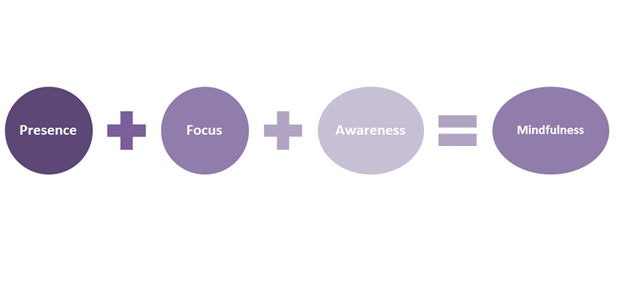What is Mindfulness?
By: Nathalie Heynderickx and Zen Goh
In my last 10 days silent retreat I asked Pra Manah, a senior Thai Buddhist monk who has been my mindfulness teacher for 12 years, how he would define mindfulness.
His answer was simple: “It is a quality of a well-trained consciousness.”
The English word mindfulness has its roots in the Sanskrit word “Smrti” and the Pali word “Sati”. Sanskrit and Pali being two ancient-sacred languages. Therefore mindfulness original meaning was “to remember” or “to recollect” (the object of focus) and not to forget or be distracted.
Since its introduction into the scientific literature (Brown & Ryan, 2003), much research has been devoted to understanding the different aspects of mindfulness. This discussion remains lively (e.g., Baer, Smith, Hopkins, Krietemeyer, & Toney, 2006; Bishop et al., 2004; Shapiro, Carlson, Astin, & Freedman, 2006), the common elements of mindfulness are paying attention purposefully, without judgment, to the present moment, with an open and receptive attitude (Kabat-Zinn, 2011).
I personally like to define mindfulness as a combination of 3 key skills:

1. Presence
This element is about our ability to be fully present with our object of choice, which could be a person we are speaking with, a task we are performing or our own breath – always available to us.
2. Focus
This element is about our ability to pay continuous and undivided attention at the object of choice without being distracted.
3. Awareness
This element is about our ability to notice internal (thoughts, feelings, memories) and external (sounds, aromas etc) events – or distractions – while maintaining full attention to our object of choice.
In conclusion, although most definitions of mindfulness emphasize the attentional skills and faculty of being present it is important to consider awareness component which is often overlooked and is a foundation for the cultivation of emotional intelligence.
Take Action:
1. Next time you have a shower bring your attention to your own breath, the sensations of the body and the sounds around you. Many of us struggle to find time to sit still hence integrating mindfulness into ordinary activities practiced daily, such as showers and meals, can be a great start to increase self-awareness!
2. Next time you join a meeting try your best to devote your full attention to the chair of the meeting or whoever is speaking in a given moment. Make a conscious effort to be present moment to moment.
Baer, R. A., Smith, G. T., Hopkins, J., Krietemeyer, J., & Toney, L. (2006). Using self-report assessment methods to explore facets of mindfulness. Assessment, 13(1), 27–45.
Bishop, S. R., Lau, M., Shapiro, S., Carlson, L., Anderson, N. D., Carmody, J., … Velting, D. (2004). Mindfulness: A proposed operational definition. Clinical Psychology: Science and Practice, 11, 230–241. https://doi.org/10.1093/clipsy/bph077
Brown, K. W., & Ryan, R. M. (2003). The benefits of being present: Mindfulness and its role in psychological well-being. Journal of Personality and Social Psychology, 84, 822–848. https://doi.org/10.1037/0022-3514.84.4.822
Kabat-Zinn, J. (2011). Some reflections on the origins of MBSR, skillful means, and the trouble with maps. Contemporary Buddhism, 12, 281–306. https://doi.org/10.1080/14639947.2011.564844
Shapiro, S. L., Carlson, L. E., Astin, J. A., & Freedman, B. (2006). Mechanisms of mindfulness. Journal of Clinical Psychology, 62, 373–386. https://doi.org/10.1002/jclp.20237
#Mindfulness #Selfawareness #Focus #Presence #Attention #HumanSkills #ZenHighAchiever












Leave a Reply